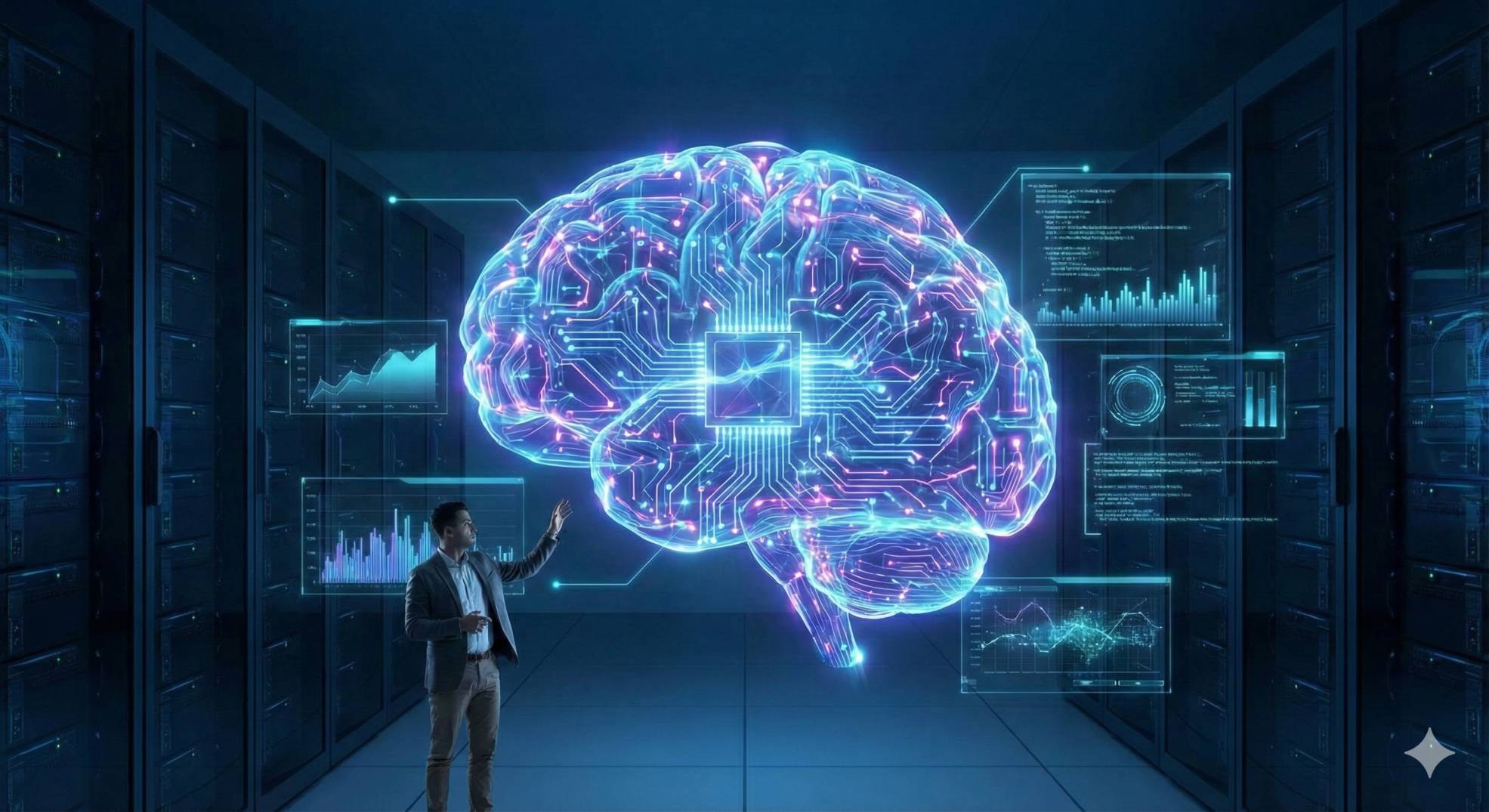Keeping Training Content Fresh When Tech Moves Every Week
Think of learning about AI and data science as a very fast-moving train. New discoveries and tools pop up almost every week!
The biggest challenge for people who create lessons (like teachers and training companies) is not just making the lessons but making sure those lessons are always up to date with the latest technology.
Here are seven smart ways that lesson creators and schools/partners can work together to keep their teaching fresh and ahead of the curve:
1. Establish Continuous Feedback Loops
The fastest way to know your training content is stale: ask the people on the frontline. Partners should implement mechanisms for real-time feedback from both trainers and learners working with AI solutions in production. These loops highlight emerging knowledge gaps and surface new technologies faster than annual curriculum reviews.
A training institute runs quarterly “field-pulse” surveys for learners who are now using a new LLM-based tool. They discover that a module on prompt engineering lacks coverage of the recent fine-tuning technique introduced two months ago. That insight triggers a module update within weeks.
In 2025, the online data science training programs market is forecast to grow at ~35.8% CAGR between 2024 and 2029. That growth means more rapid change, making feedback loops a must.
2. Leverage AI for Content Curation and Updates
When technology changes weekly, manual review of every slide and every exercise becomes untenable. Instead, teams can deploy AI-based tools to monitor industry change (e.g., new research papers on arXiv, updated blog posts from Google AI), summarise key updates and even propose revisions for outdated materials. Humans then review and refine.
A training partner builds an internal “watch-bot” that scans calls for papers in top ML conferences and flags when a technique (e.g., self-supervised contrastive learning) begins to dominate recent publications. The content team receives an alert and updates the module accordingly.
The global AI training dataset market alone is estimated at USD 2.82 billion in 2024 and projected to grow at ~27.7% CAGR to 2029. At that pace, content built six months ago may already lack critical relevance.
The AI CERTs Partner program welcomes institutional partners to co-develop custom AI agents for content curation and integrate those into our training pipelines.
3. Develop Cross-Functional Tiger Teams
Break silos. Create small, agile teams—SMEs, technical leads, training facilitators, from both your organisation and your training partner. These “tiger teams” sprint on new tools, generate real-world use cases, build fresh content and pilot it before full rollout.
A tiger team meets biweekly: a data scientist who is experimenting with a new MLOps platform, a training lead from the partner institution, and a curriculum designer. They prototype a micro-workshop on “Deploying Edge AI with Wasm”, test it with learners, then integrate it into core modules.
Modular and fast-moving approaches like these help avoid the “big annual overhaul” lag that many training programmes suffer. With the training industry more dynamic than ever, tiger teams give agility. According to recent data, training expenditures in large US companies dropped from an average of USD 16.1 million in 2023 to USD 13.3 million in 2024. That squeeze makes innovation via tiger teams more imperative.
4. Implement Modular and Bite-Sized Learning
When tech changes weekly, revising a six-week monolithic course is inefficient. Break topics into modules or micro-units, each focused and independently updateable. This architecture lets you swap, update or retire individual segments without disrupting the whole course.
Instead of “Advanced Deep Learning – 40 hours”, the course is built as ten modules of 4 hours each: “Transformer architectures”, “Efficient fine-tuning”, “Edge AI deployment”, “LLM integration in business apps”, etc. When a new “Mixture of Experts” architecture gains traction, only that module is updated.
Micro-learning formats also align with modern attention spans and on-demand learning habits. The global MOOC market is estimated to reach USD 25.33 billion by 2025 with a ~32% CAGR from 2019. Designing content in modular blocks helps partners keep up.
5. Share Resources and Expertise
When training content must evolve quickly, isolated organisations fall behind. Establish shared platforms like GitHub repos, shared knowledge hubs, and communal documentation. Here partners contribute code samples, best practices, troubleshooting guides and evolving case studies.
A shared private repository holds “Weekly Tech Watch” logs contributed by each partner: summaries of a new AI framework, a quick tutorial, and a GitHub link. Trainers from all partner institutions pull directly from this repo when preparing sessions.
Collaboration not only reduces duplication of work but harnesses the community’s collective intelligence, essential when changes are frequent. Given the size and growth of the training dataset market and e-learning ecosystem, collaborative resource sharing is a competitive differentiator.
AI CERTs AAP invites universities and training outfits to become collaborating partners: get access to our shared resource pool, contribute your updates and stay ahead as tech shifts.
6. Focus on Fundamentals and Adaptability
While the tooling and frameworks in AI change almost weekly, the underlying principles statistics, algorithmic thinking, problem formulation remain far more stable. Training content should emphasise those fundamentals and build “rapid learning muscle” and critical thinking so learners can evaluate new tech, adapt tools and decide when a new feature matters.
A training module on “Bias and fairness in machine learning” focuses on the core concept of sample bias, representation, and fairness metrics and then adds “hot module” sections on the newest SDKs or techniques (e.g., OpenAI’s new bias mitigation API). When the API evolves, that part gets swapped, but the core principle remains.
With tech moving so fast, the risk is spending half your time teaching the latest shiny tool, which may be outdated in months. A 2025 industry review found that 34% of training hours were delivered through online/computer-based technologies, signalling the medium and tools will keep shifting.
7. Incorporate Hands-On, Project-Based Learning & Train-the-Trainer
Real-world experience accelerates relevance. Partners can run live projects or simulations that require learners to use the latest tools, solve current-industry problems, and test what works and what doesn’t. Simultaneously, implement a “train-the-trainer” approach: empower your core group of champions who are deeply familiar with current tech trends and who then cascade knowledge across the trainer network.
A university training partner runs a capstone project where learners deploy a real-time AI chatbot using a newly released LLM API. Simultaneously, five trainer-champions participate in a “master update” session two weeks earlier, then lead peer sessions for other trainers.
Projects expose gaps rapidly (e.g., “this model doesn’t scale”, “this architecture fails on edge devices”) and feed back into content revision. Meanwhile, train-the-trainer ensures knowledge spreads fast. With the online data science training market forecasted to grow strongly, institutes that incorporate hands-on and trainer-cascade will outperform.
If your institution is ready to partner in this model, join the AI CERTs Partner program collaborate with us, plug into our ecosystem, and ensure your learners always receive the latest, most relevant content, even when the tech world doesn’t pause. Let’s build training program that move with the future, not behind it.
Recent Blogs

FEATURED
Infrastructure You Don’t Have to Build
November 27, 2025
FEATURED
How to Build a Scalable Business Pipeline as an Authorized Training Partner
November 27, 2025
FEATURED
The Power of Data Analytics in Authorized Training Partner Operations
November 27, 2025
FEATURED
The Impact of Authorized Training Partners on Regional Employment Growth
November 25, 2025
FEATURED
How Authorized Training Partners Can Develop Local Instructor Networks
November 25, 2025

